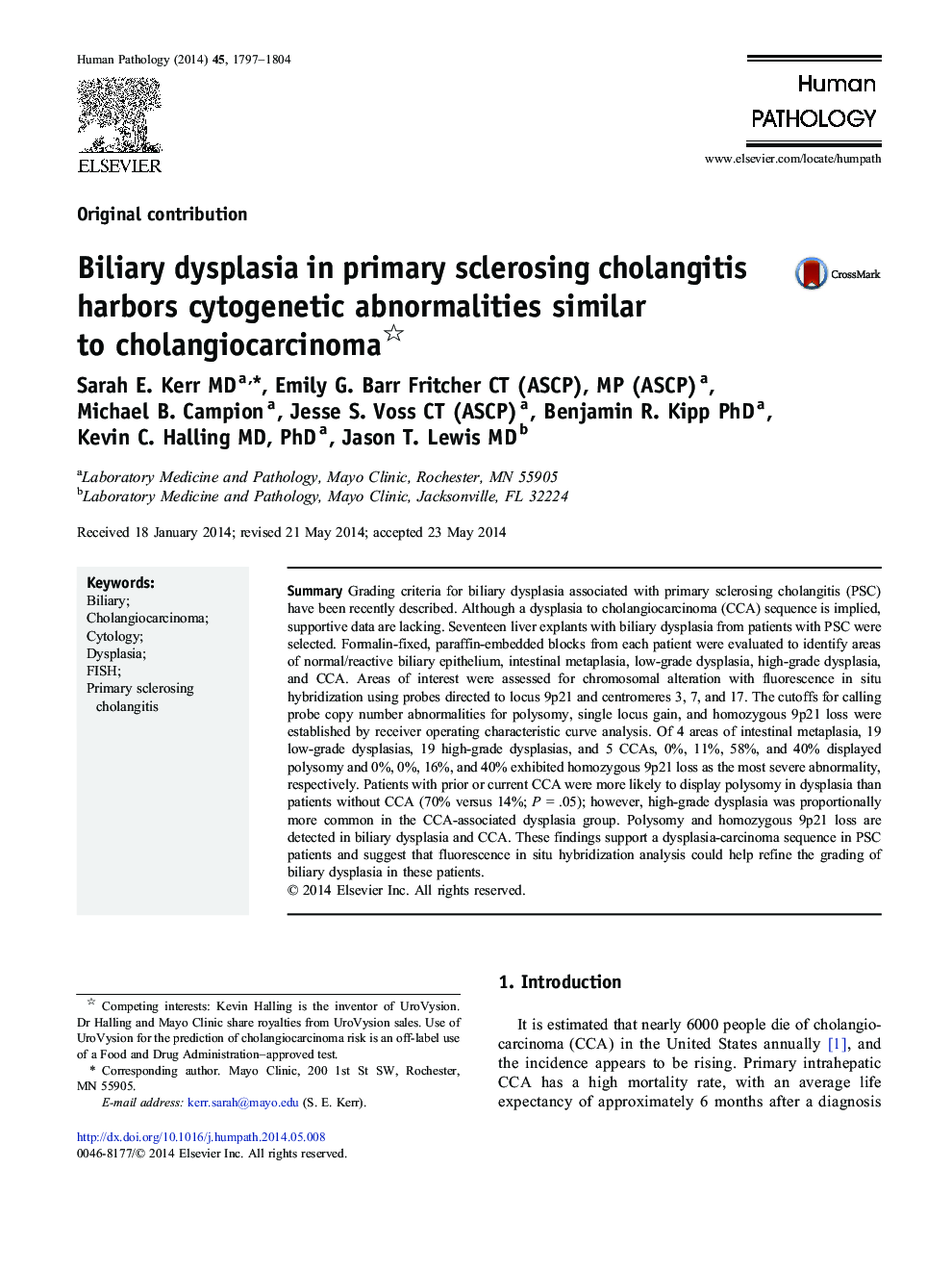| کد مقاله | کد نشریه | سال انتشار | مقاله انگلیسی | نسخه تمام متن |
|---|---|---|---|---|
| 4132892 | 1271398 | 2014 | 8 صفحه PDF | دانلود رایگان |

SummaryGrading criteria for biliary dysplasia associated with primary sclerosing cholangitis (PSC) have been recently described. Although a dysplasia to cholangiocarcinoma (CCA) sequence is implied, supportive data are lacking. Seventeen liver explants with biliary dysplasia from patients with PSC were selected. Formalin-fixed, paraffin-embedded blocks from each patient were evaluated to identify areas of normal/reactive biliary epithelium, intestinal metaplasia, low-grade dysplasia, high-grade dysplasia, and CCA. Areas of interest were assessed for chromosomal alteration with fluorescence in situ hybridization using probes directed to locus 9p21 and centromeres 3, 7, and 17. The cutoffs for calling probe copy number abnormalities for polysomy, single locus gain, and homozygous 9p21 loss were established by receiver operating characteristic curve analysis. Of 4 areas of intestinal metaplasia, 19 low-grade dysplasias, 19 high-grade dysplasias, and 5 CCAs, 0%, 11%, 58%, and 40% displayed polysomy and 0%, 0%, 16%, and 40% exhibited homozygous 9p21 loss as the most severe abnormality, respectively. Patients with prior or current CCA were more likely to display polysomy in dysplasia than patients without CCA (70% versus 14%; P = .05); however, high-grade dysplasia was proportionally more common in the CCA-associated dysplasia group. Polysomy and homozygous 9p21 loss are detected in biliary dysplasia and CCA. These findings support a dysplasia-carcinoma sequence in PSC patients and suggest that fluorescence in situ hybridization analysis could help refine the grading of biliary dysplasia in these patients.
Journal: Human Pathology - Volume 45, Issue 9, September 2014, Pages 1797–1804